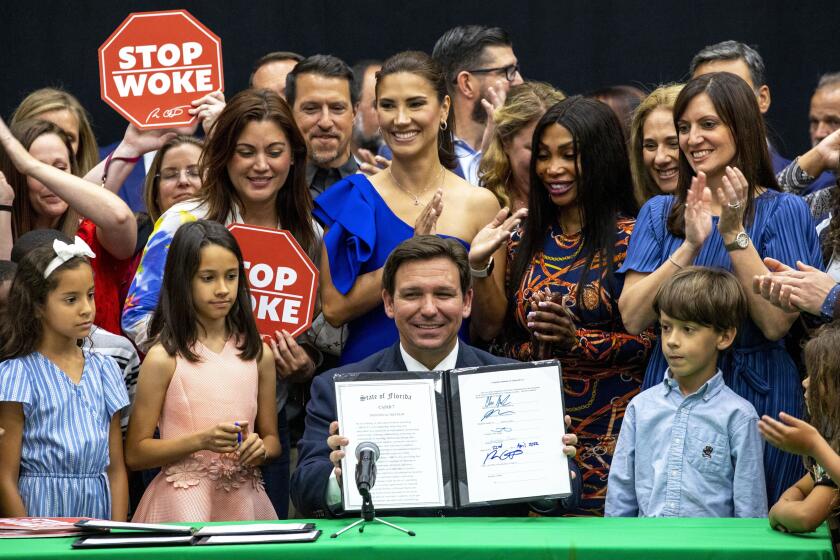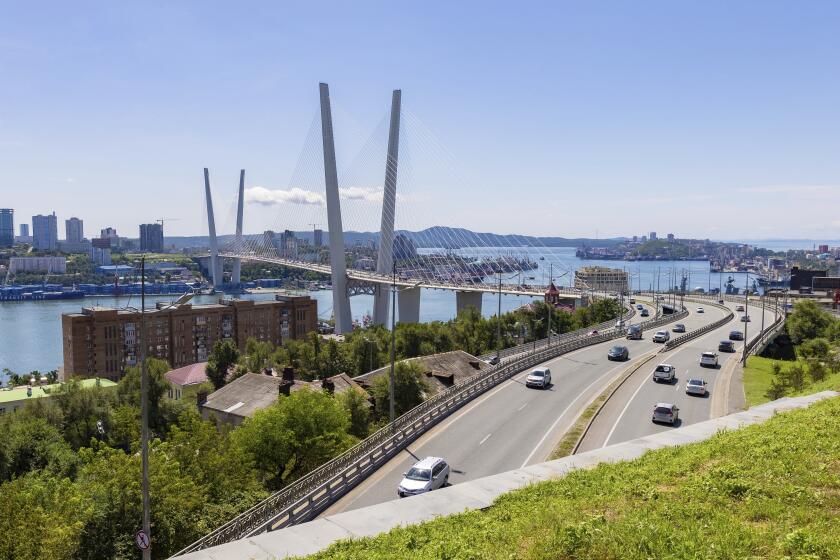Customs Staffing Inadequate for Traffic at West Coast Ports, Report Says
U.S. Customs Service staffing of West Coast ports has not kept pace with increasing traffic there in recent years, resulting in serious delays in the processing of passengers and goods at some sites, a report commissioned by a port authorities’ coalition charged Wednesday.
The report, released at a news conference, bolstered claims by port officials and some congressmen that the Customs Service has failed to adjust to changing patterns of international trade and transportation.
The report “clearly demonstrates that Congress was correct (last year) when we turned down the Administration’s proposed cut in staffing and, in fact, added Customs Service resources on the West Coast,” said California Rep. Edward R. Roybal (D-Los Angeles), chairman of a House subcommittee that oversees the Customs Service.
Customs Service officials said Wednesday that most of the manpower and delay problems cited in the report have eased since the data was collected in 1986.
“Our concern is that where the Customs Service meets the public, it serves the public well. And I think that they have found that on the working level, where we do meet the public, we’re doing a good job,” said agency spokesman Ed Kittredge.
But the report said that although 1987 data was not available, its critical finding “adequately reflects current conditions on a servicewide and regionwide basis.”
The study was conducted by the consulting firm of Booz, Allen & Hamilton Inc. of New York for the Western States Coalition for Effective U.S. Customs Service, whose members include Los Angeles International Airport and the ports of Los Angeles, Long Beach, San Diego, San Francisco, Oakland, Seattle and Tacoma, Wash.
Using government and industry data, the study found that ocean-going trade through West Coast ports increased about 10% annually between 1981 and 1986, while trade through East Coast ports increased only 4% and Gulf Coast traffic declined.
But during that period, it said, the Customs Service did not adequately shift resources to cope with the changes. As a result, customs inspectors’ workloads on the West Coast were 30% to 50% higher than elsewhere and processing delays at some high-traffic locations were severe.
For example, only 9% of cargo requiring general inspection cleared customs within eight hours in the ports of Los Angeles and Long Beach, compared to a 42% clearance rate for the entire West Coast, the report said.
Of goods requiring close examination by inspectors, none cleared customs within eight hours in Los Angeles or Long Beach, while 16% did so in the region.
At international airports, the average time required for a passenger to clear customs was 93 minutes in Los Angeles, compared to 64 minutes at Seattle/Tacoma.
Congressional criticism of such delays helped prompt Congress last year to provide the department with a 20% budget increase, despite Administration proposals for reduced funding.
Kittredge said customs delays in Los Angeles and some other ports are caused less often by staff shortages than by the large volume of sensitive goods requiring close inspection.
Kittredge pointed out that in a survey conducted as part of the study, 79% of trade community representatives rated the level of service provided by the Customs Service nationwide as satisfactory or better.
More to Read
Start your day right
Sign up for Essential California for news, features and recommendations from the L.A. Times and beyond in your inbox six days a week.
You may occasionally receive promotional content from the Los Angeles Times.






